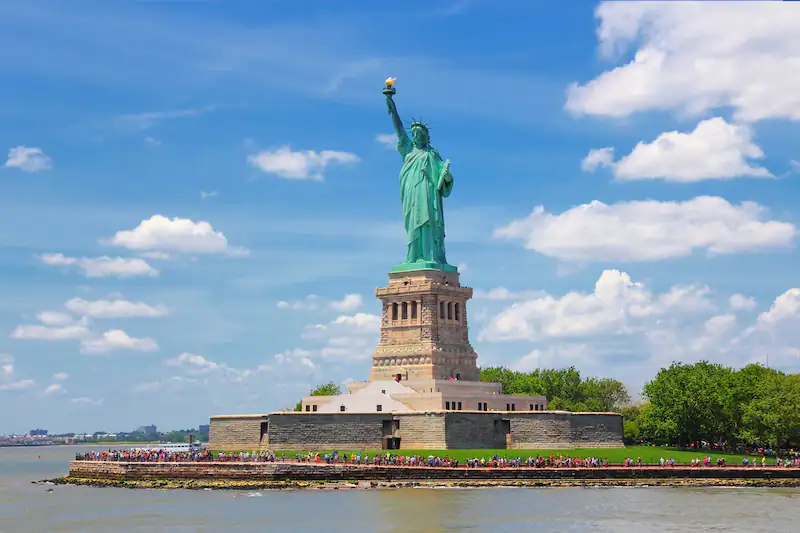The Statue of Liberty in New York
Introduction:
The Statue of Liberty, located on Liberty Island in the New York Harbor, is one of the most iconic symbols of freedom and democracy in the world.
Gifted to the United States by the people of France in 1886, this colossal statue has stood proudly for over a century, welcoming immigrants and visitors to the shores of the United States.
we will explore the history, significance, and the awe-inspiring story of the Statue of Liberty.

A Gift from France:
The idea for the Statue of Liberty was conceived by French abolitionist Édouard René de Laboulaye in the mid-1860s, as a tribute to the United States’ centennial and to celebrate the abolition of slavery after the American Civil War.
French sculptor Frédéric Auguste Bartholdi was commissioned to design the statue, while Gustave Eiffel, who later designed the Eiffel Tower, was responsible for the iron framework that supports it.
Standing at 151 feet and 1 inch (46 meters), the statue is a representation of Libertas, the Roman goddess of freedom.
She holds a torch in her right hand, symbolizing enlightenment, and in her left hand, she carries a tabula ansata, which is a tablet with the date of the American Declaration of Independence, July 4, 1776.
The Arrival in New York:
In 1885, after being constructed in France, the statue’s disassembled pieces arrived in New York City, packed in more than 200 crates.
It took several months to reassemble the statue on what was then called Bedloe’s Island, which was later renamed Liberty Island.
The task was not only an engineering feat but also a symbol of the enduring friendship between France and the United States.
The Symbol of Hope:
The Statue of Liberty quickly became a symbol of hope and freedom for millions of immigrants who arrived in the United States seeking a better life. From 1892 to 1954, nearby Ellis Island served as the primary immigrant processing center, with many newcomers catching their first glimpse of Lady Liberty as their ships entered New York Harbor.
The statue welcomed them with open arms, a beacon of hope and a promise of a brighter future.
The Monument Today:
Today, the Statue of Liberty stands as a testament to the enduring values of freedom, democracy, and human rights. It is a UNESCO World Heritage site and continues to be a symbol of welcome to immigrants and a source of inspiration for people all over the world.
Visitors to Liberty Island can take a ferry from Battery Park in Manhattan to explore the statue and its pedestal.
The statue’s crown, which reopened to the public after the events of September 11, 2001, provides breathtaking views of the city and harbor.
The museum on Liberty Island offers a wealth of historical information and artifacts, shedding light on the history and significance of the monument.
In 1986, the Statue of Liberty underwent an extensive restoration for its centennial, ensuring that this iconic symbol of freedom will continue to inspire generations to come.
Conclusion:
The Statue of Liberty is more than just a piece of art or a tourist attraction; it is a living testament to the ideals upon which the United States was founded.
As we stand in the shadow of this remarkable monument, we are reminded of the principles of freedom, liberty, and the pursuit of happiness that have been at the heart of the American Dream.
The statue’s enduring presence in New York Harbor is a reminder that these ideals remain as relevant today as they were in 1886 when she first lifted her lamp beside the golden door.
follow more: Revolutionizing Commercial Insurance: A Closer Look at Corvus Insurance
To know more about: Liberty of statue











1 Comment
[…] follow for more: Liberty Enlightening the World: The Statue of Liberty in New York […]